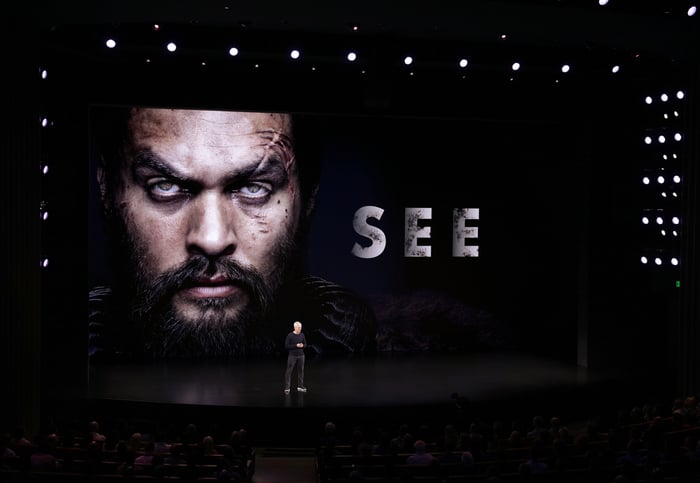Some things are as sure as the changing of the seasons, and one thing that Apple (NASDAQ: AAPL) fans have come to expect is the company’s annual keynote address and product reveal in September. Another thing that has been consistent over the years is the newly updated iPhone that debuts at the event. While there have occasionally been big upgrades, more often than not the iPhone gets incremental upgrades, and in recent years, a corresponding increase in price.
While the event this week provided many of the superlatives and incremental improvements that investors have come to expect, there was one noticeable shift in tone from previous events that was evident across several of Apple’s product announcements — the company now appears willing to compete on price.
A shift in tone
Going back to the earlier days of the iPhone, each new device had the same starting cost of $650, with higher price tags for models with additional memory. The older models were then offered at slightly discounted prices. The debut of the iPhone X series two years ago saw a stunning increase, bearing a wallet-lightening $999 starting price, while the iPhone 8 clocked in at $699.
That mindset seemed to change this week, when Apple introduced the latest version of its flagship device — the iPhone 11 — for just $699, a full $50 cheaper than many stock watchers expected. The tech giant split the difference by introducing its first iPhone to hold the coveted “Pro” designation — iPhone 11 Pro — with a starting price of $999.
That’s not all
It wasn’t just the iPhones that debuted with cheaper-than-expected price tags.
Apple finally provided pricing for the two remaining services set to launch this year — Apple Arcade and Apple TV+. Rumors have swirled for months about the monthly subscription price of its latest services, especially the company’s streaming offering.
The company offered the services at $4.99 each, which was surprising, especially considering recent reports that suggested Apple TV+ would set consumers back $9.99 per month.
Why the change of heart?
With the debut of the iPhone X, many believed the Cupertino company had gone too far with its pricing, particularly in light of the slowing unit sales and increasing saturation occurring in the smartphone industry.
For the 2019 first quarter (which ended Jan. 31, 2019), Apple reported sales that declined by 5% year over year, with iPhones revenue plummeting 15% compared to the prior-year quarter. While Apple noted weak economic conditions in China and foreign currency headwinds, many believed that the iPhone had just become too expensive, opening the door for low-cost smartphone makers in China to steal market share.
Apple may finally be acknowledging that its top-tier pricing went too far.

Tim Cook premieres the trailer for Apple original series See, starring Jason Momoa, which will appear on Apple TV+. Image source: Apple.
Better late than never
The one thread that wove its way through Apple’s product reveal was the measured way in which the company approached pricing — both on the upgrades to its existing product lines and on its soon-to-debut services.
Only time will tell if the shift is the right move, but investors appeared to applaud the company’s change of heart, as Apple’s stock gained more than 3% on Wednesday in the wake of its annual event.






